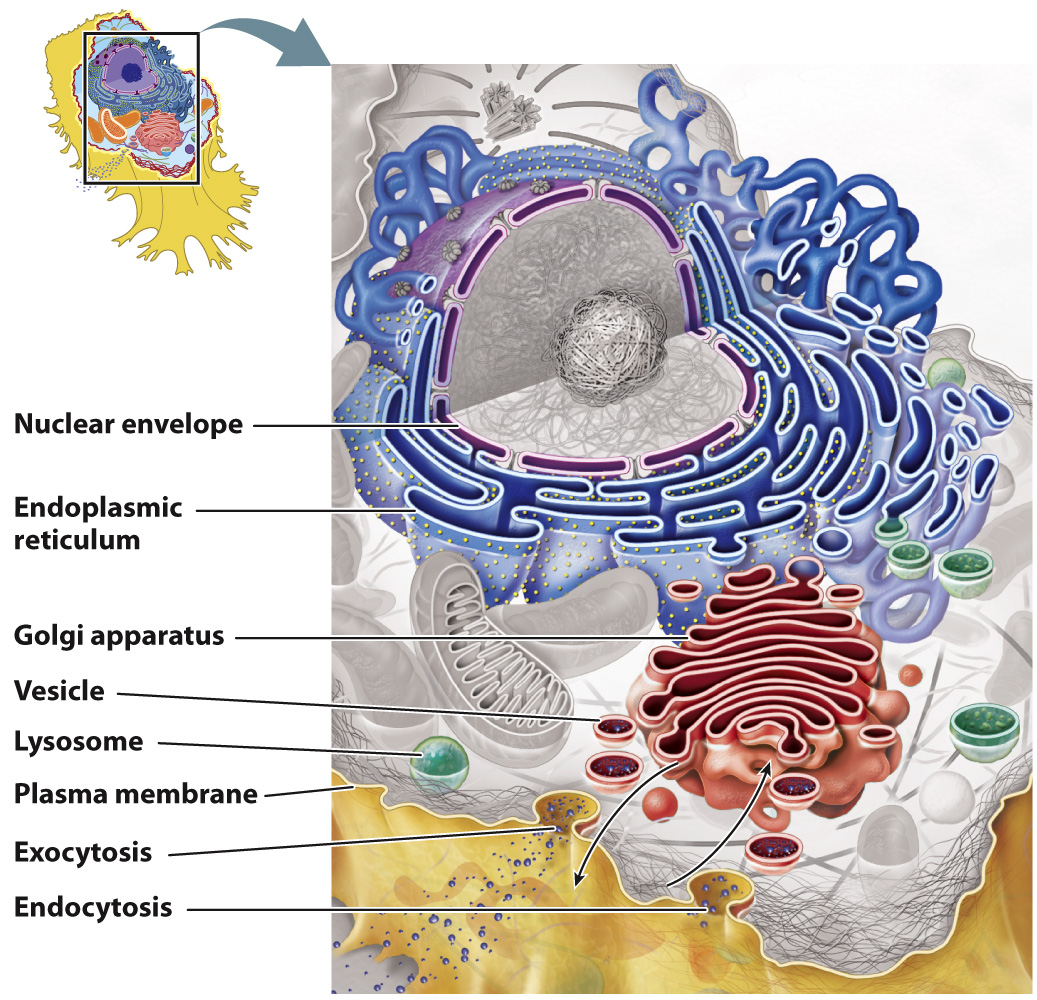5.4 The Endomembrane System
In eukaryotes, the total surface area of intracellular membranes is about tenfold greater than that of the plasma membrane. This high ratio of internal membrane area to plasma membrane area underscores the significant degree to which a eukaryotic cell is divided into internal compartments. Many of the organelles inside cells are not isolated entities, but instead communicate with one another. In fact, the membranes of these organelles are either physically connected by membrane “bridges” or they are transiently connected by vesicles, small membrane-
In total, these interconnected membranes make up the endomembrane system. The endomembrane system includes the nuclear envelope, endoplasmic reticulum, Golgi apparatus, lysosomes, the plasma membrane, and the vesicles that move between them (Fig. 5.18). In plants, the endomembrane system is actually continuous between cells through connecting pores called plasmodesmata (see Fig. 5.17; Chapters 10 and 28).

Extensive internal membranes are not common in prokaryotic cells. However, photosynthetic bacteria have internal membranes that are specialized for harnessing light energy (Chapters 8 and 26).